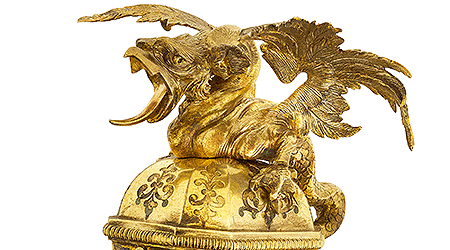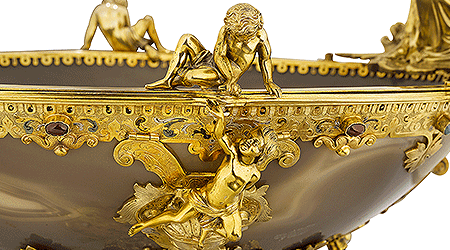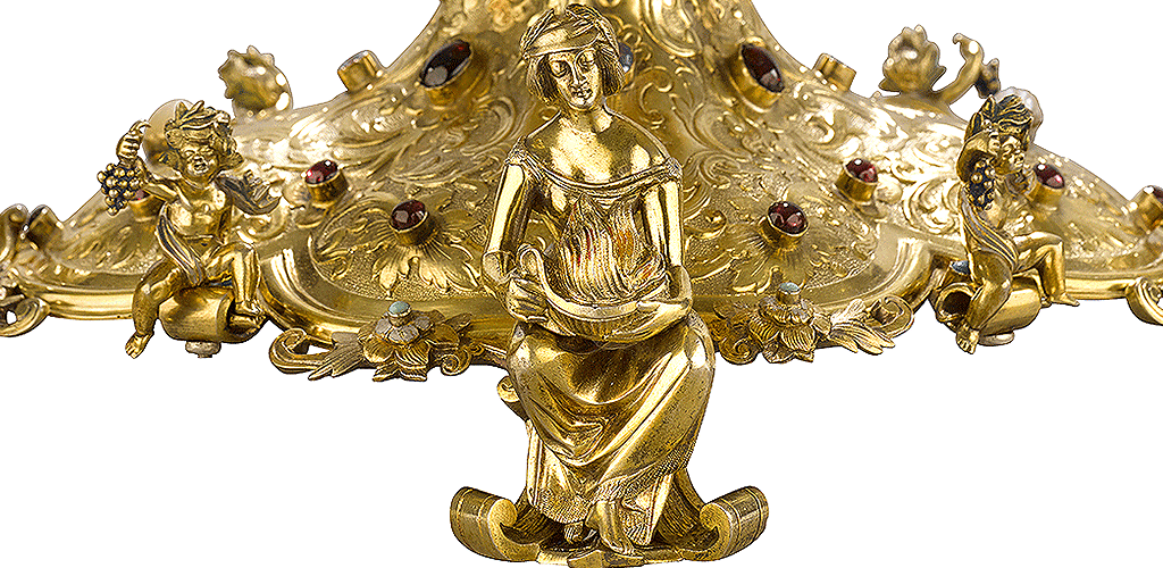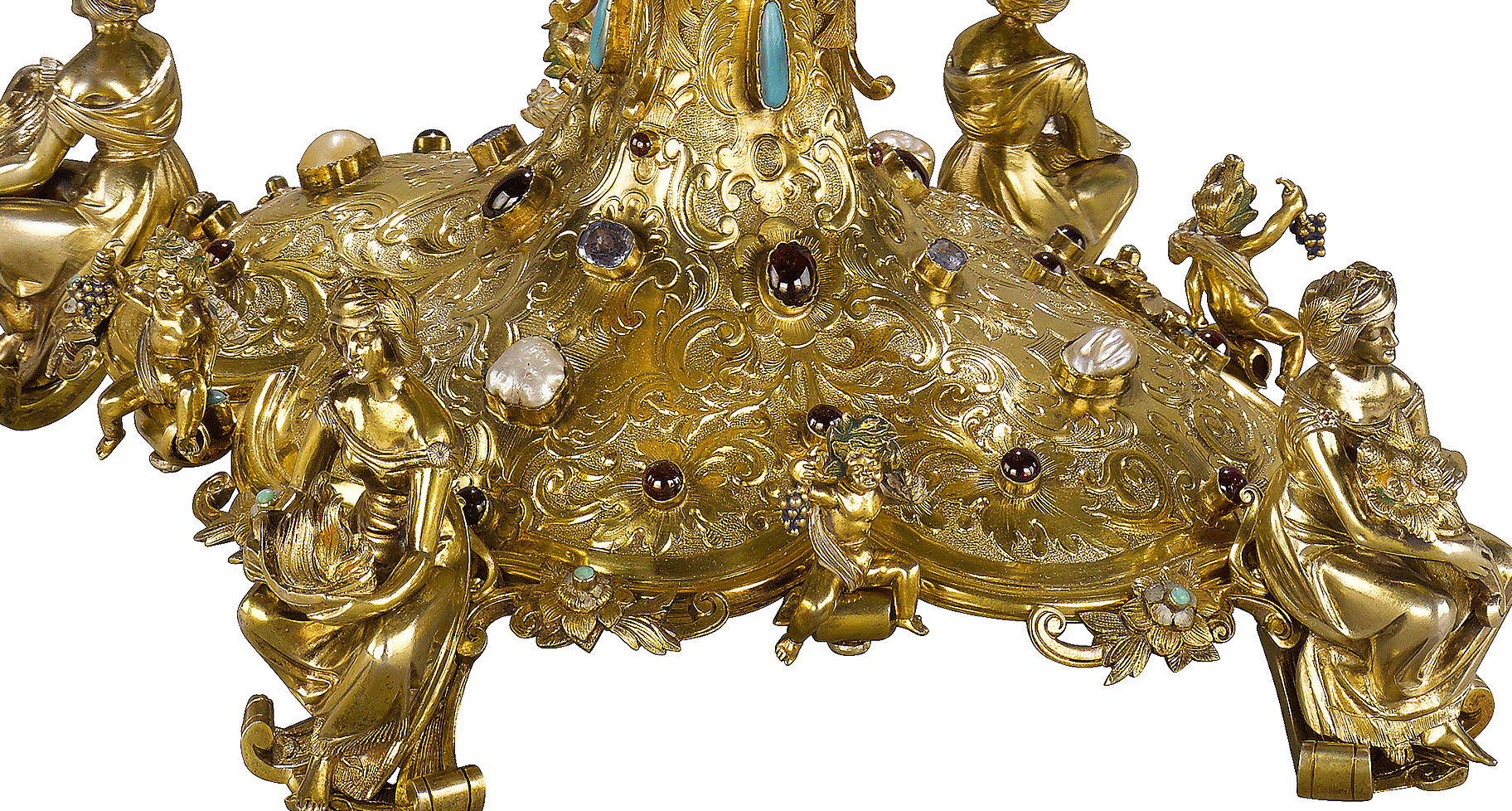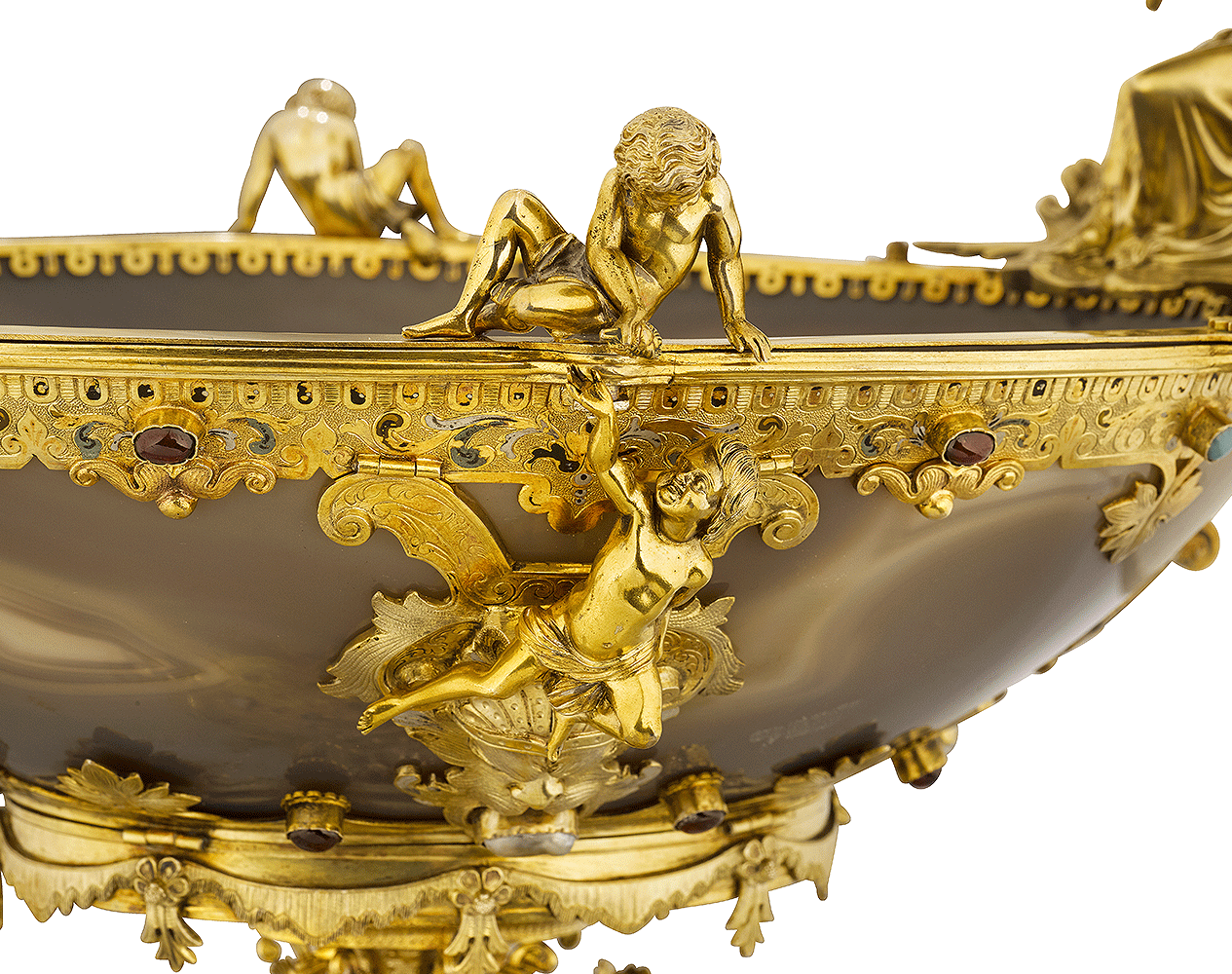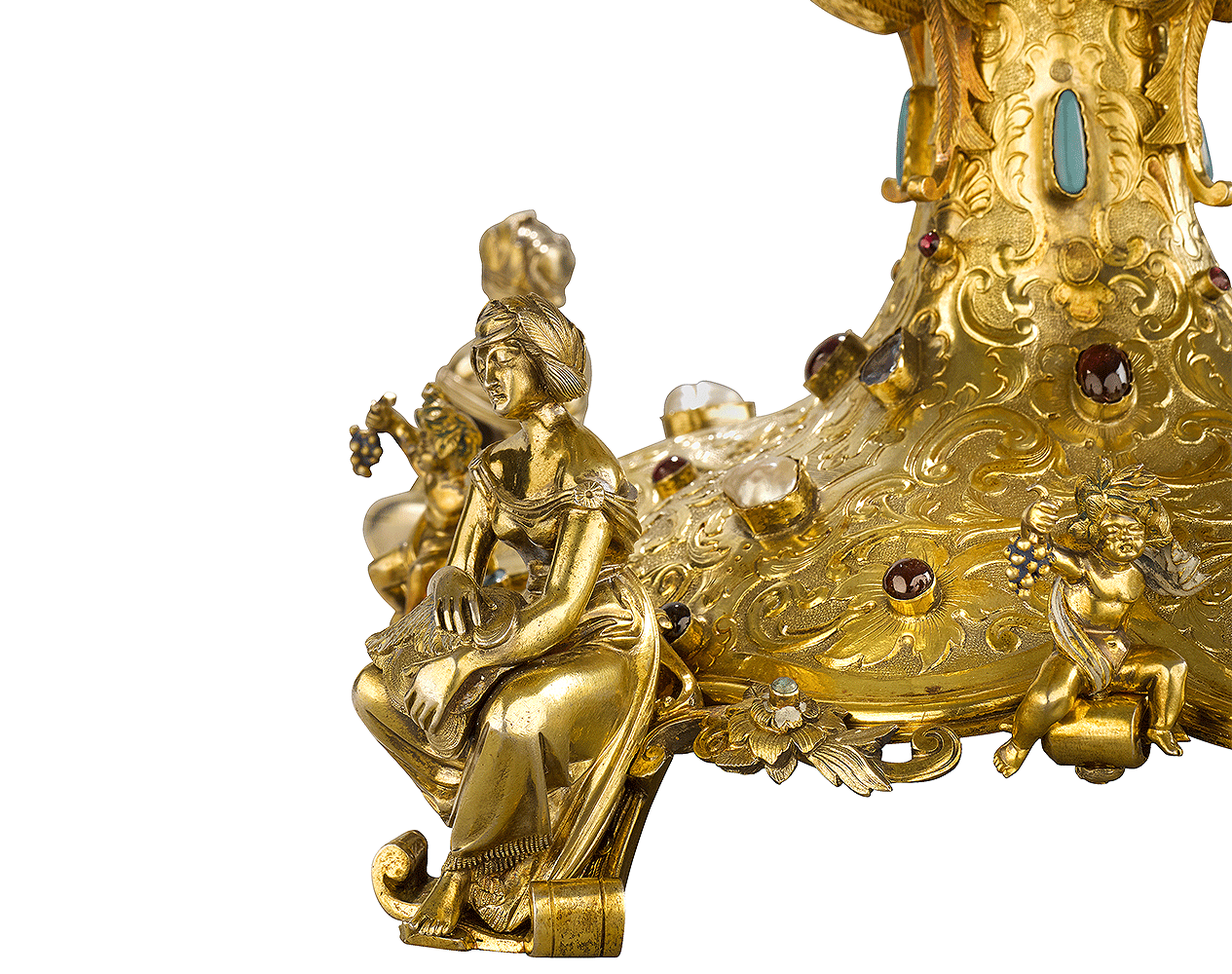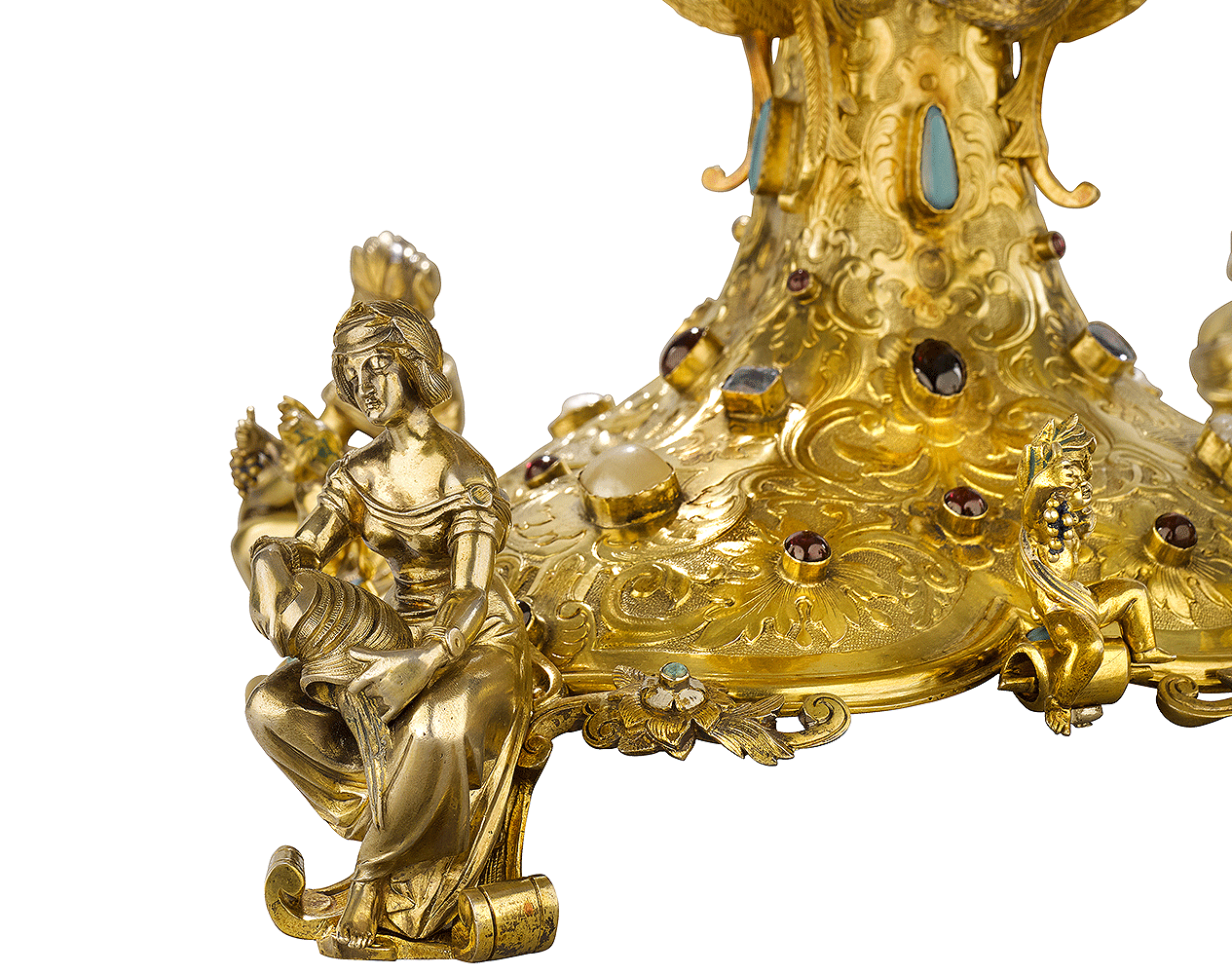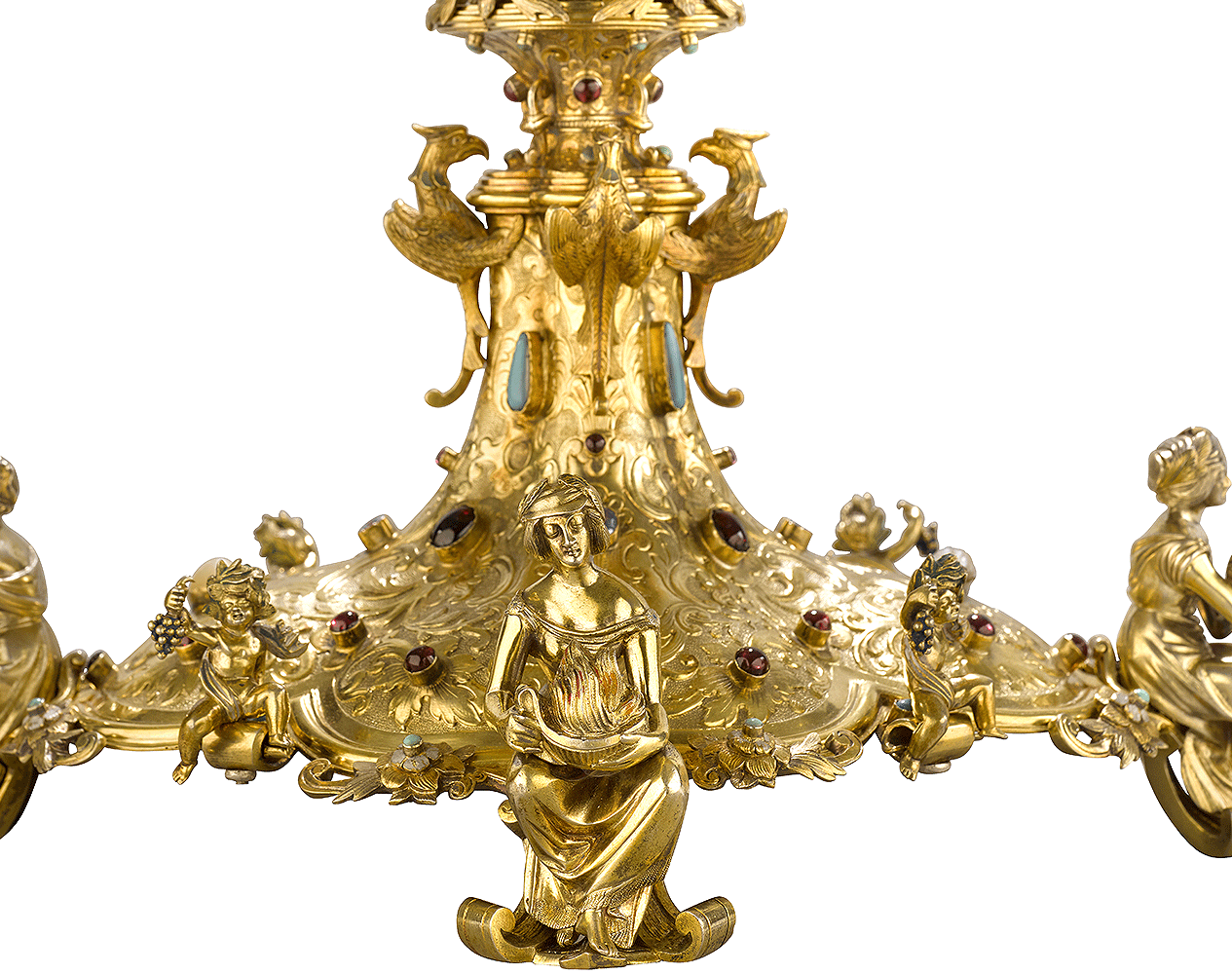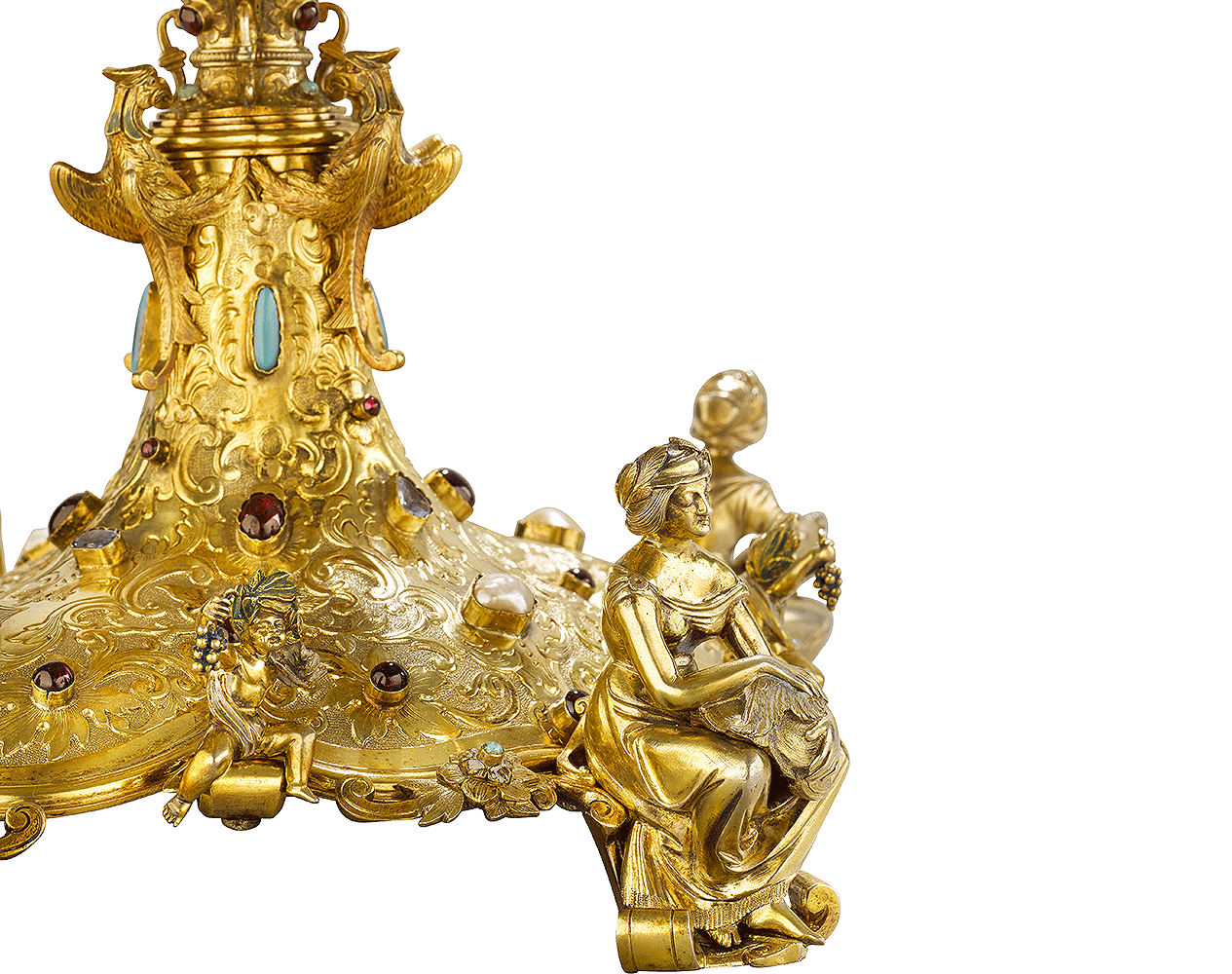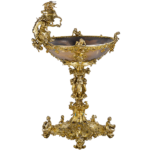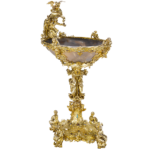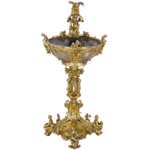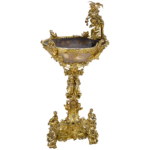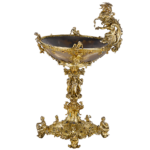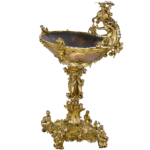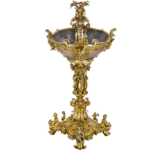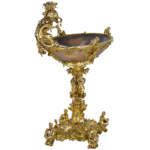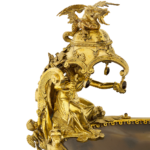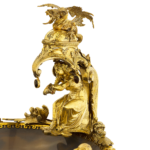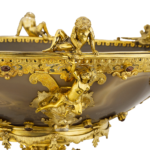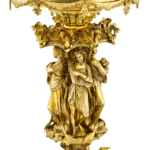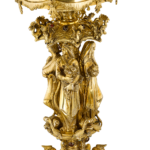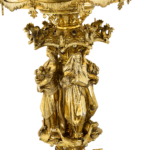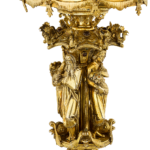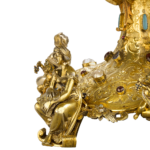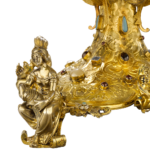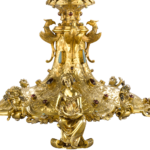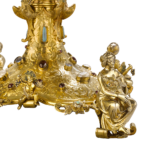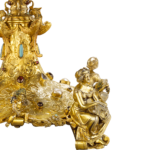Provenance
Property of the Earls of Mansfield and Mansfield, Scone Palace
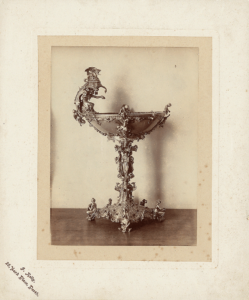
A spectacular agate-mounted silver-gilt cup in the Neo-Renaissance style. The carved agate bowl mounted with a silver-gilt rim, set with cabochon garnets and turquoise, decorated with blue enamel and cast figures of playful putti. The sides of the cup are applied with a silver-gilt strapwork chased with grotesque masks. The handle is shaped as an allegorical female figure of spring under a canopy surmounted by a dragon. The cup is supported on a slender stem formed of four standing figures symbolising the seasons, interspaced with dolphins, and rests on a lozenge-shaped foot chased with scrolling foliage, set with cabochon garnets, turquoise and pearls, with four scrolling feet each applied with a seated maiden. Contained in a fitted case. Apparently unmarked.
The object emulates Renaissance nautilus cups, created from shells of nautilus pompoilius set in elaborate gold mounts.
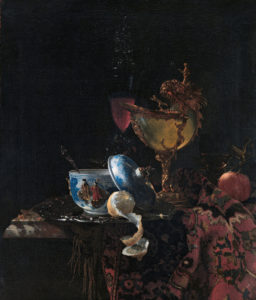
Willem Kalf, Still Life with a Chinese Bowl, Nautilus Cup and Other Objects, 1662, Museo Nacional Thyssen-Bornemisza, Madrid
Luxurious vessels made of nautilus shells were highly valued in Europe since the sixteenth century. The shells were frequently surrounded by various kinds of mythological motifs related to the sea, paying tribute to the marvellous life associated with the ocean. Combining the ‘naturalia’ and the ‘artificialia’, such items became a popular feature in “cabinets of curiosities.”
Nautilus cups were often used in still-life paintings. The 17th-century Dutch artist Willem Kalf used a nautilus cup in a number of his still-lifes, such as the one in the collection of the Thyssen-Bornemisza Museum in Madrid (Inv. no.203 [1962.10]), showing a nautilus cup along with other exotic objects.
